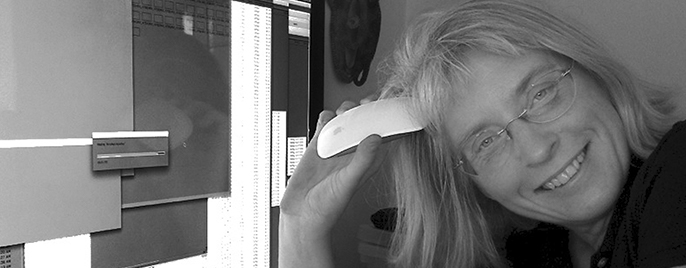What attracted you to Australia The Time Traveller's Guide?
Basically, to get a chance to help tell a BIG PICTURE story. With a starting point at the Year 'Dot' and covering a span of 4.6 billion years across four 1 hour episodes, I guess films don't get much bigger than this in terms of storytelling!!! The series was a huge challenge - a visual jig-saw puzzle of disparate elements: big, wide shot landscapes of the remotest corners of the continent; big close-ups of microscopic crystalline structures; aerials that spanned the city to the desert; more angles on a 4WD than any advertising 'creative' could dream up; CGI shots that never seemed to appear - let alone be finished; archive unearthed from dusty vaults and from under a mountain of incomplete paperwork; and a billion takes of our 'host' trying for the perfect piece-to-camera! And very little of all that footage actually came together as discreet sequences - the whole series was basically an editing 'construct', something that only acquired 'meaning in montage' (OMG - did I just ACTUALLY WRITE THAT???) AND while working closely with the Director, Richard Smith, probably the only person who understood the whole series!
How do you represent the big ideas that encapsulate this series?
The whole series is premised on a huge 'suspension of disbelief' - a 'Time Travelling occupant of a 4WD using Time-shifted GPS' which catapults the audience from one geological Period to another. The AVID 'Timewarp' FX device was rarely given a day's rest during the edit! CGI is a huge component of the series - the only way fossils can be brought to life and creatures, throughout all epochs of our continent's history, be made 'real' to an audience. Also, our new 'best friend' was the jump cut - whenever we hit a new location we would use our surplus of landscape shots to reveal as many views of the area as 10 seconds would allow! It became a kind of 'cubist' tour through a geological location - there's nothing like 'fracturing' shots to try to get across a sense of plate tectonics (!) - without actually explaining what plate tectonics IS!
How important is sound to the edit?
To me, sound was THE most important part of the edit. Perhaps 95% of the audio tracklay was done in the cutting room - it certainly took the most time! It was crucial for pacing and for providing punctuation - 'thesis television' is not the easiest thing for ANYONE, particularly in THIS day & age, to sit through! It seemed to me, that anything that broke the 'monotony' of the narrator's voice was a valuable thing. The soundscape was also used to create the sense of being in 'another' time or 'out of ordinary' time. All the driving sequences had 'sci-fi' SFX laid against them - anything EXCEPT 'real' car sounds. The soundscape was also used as a 'point of difference' for the series - I mean, who ELSE would have been crazy enough to put water 'drips' & 'plops' on a high proportion of visual cut points across FOUR HOURS of prime-time television?
You have collaborated with Richard Smith numerous times what was different in this series?
I've been fortunate enough to work with Richard Smith, who I consider a film-maker 'par excellence' for about 25 years now! In a niche area such as 'science' television, being a team certainly helps in terms of knowing what 'works' as you try to explain 'weird & wacky' concepts to people unfamiliar with or uninterested in theories about the way the world is. 'Australia The Time Traveller's Guide' was different, basically in terms of its scope. IT WAS MASSIVE! One, 1 hour episode of this type of television would have been enough - thanks very much! But having to work through four hours of carefully argued & researched scientific history of an entire continent and all who sailed upon her throughout all time was more than you really wanted to think about - until you got to the end (and even THAT hasn't happened yet!)
What was you favourite experience on the series?
The glass of champagne at the end of a 36 hour shift completing Episode 4.
